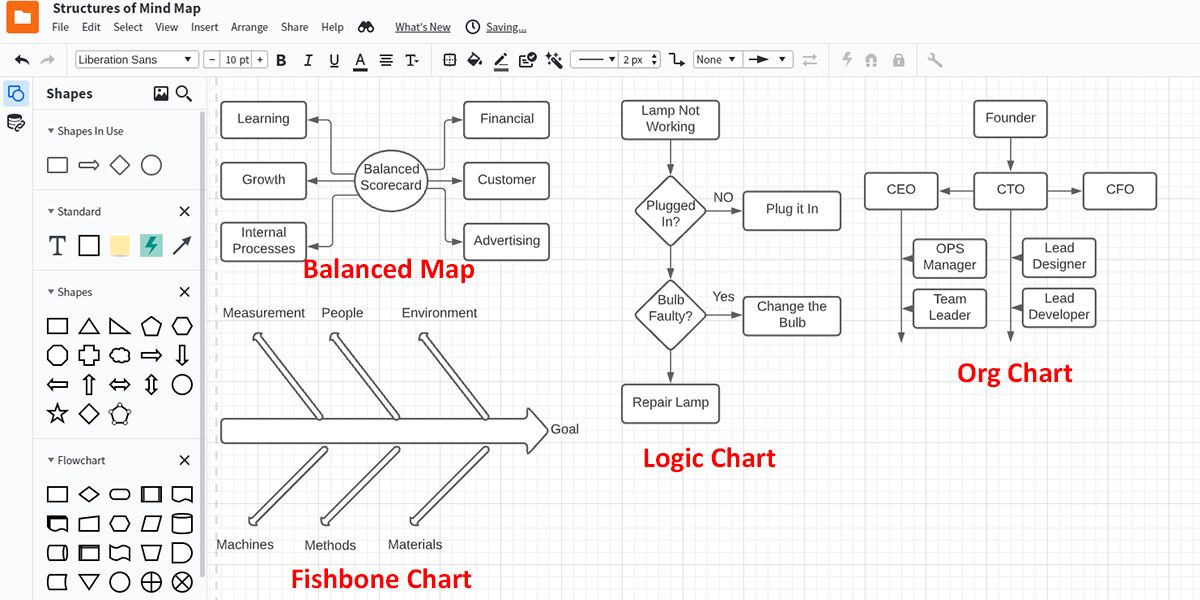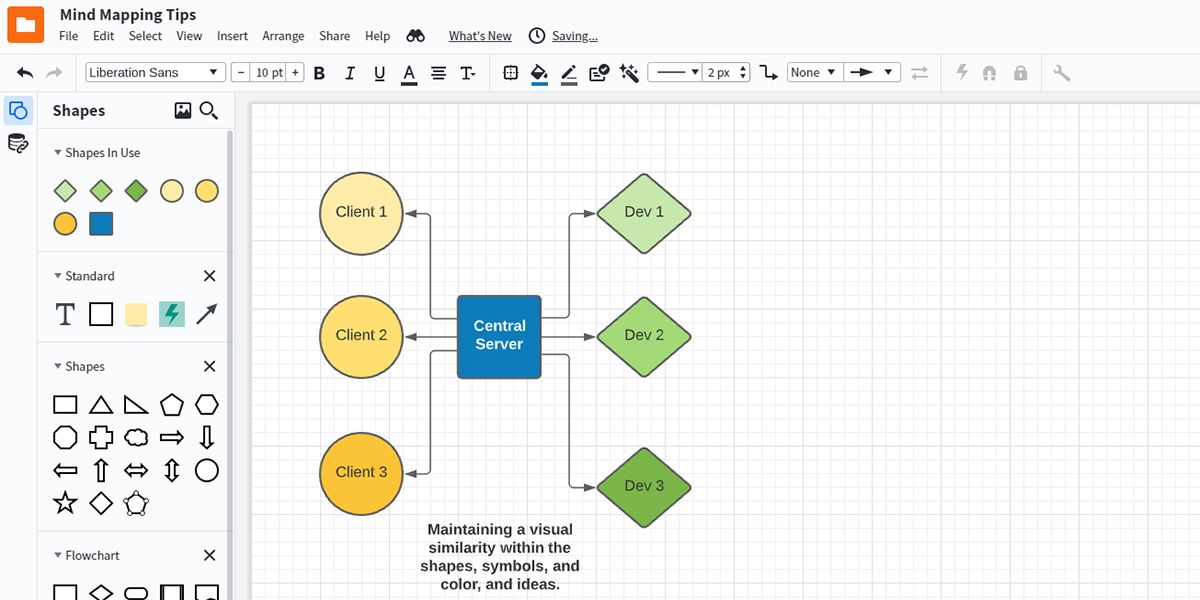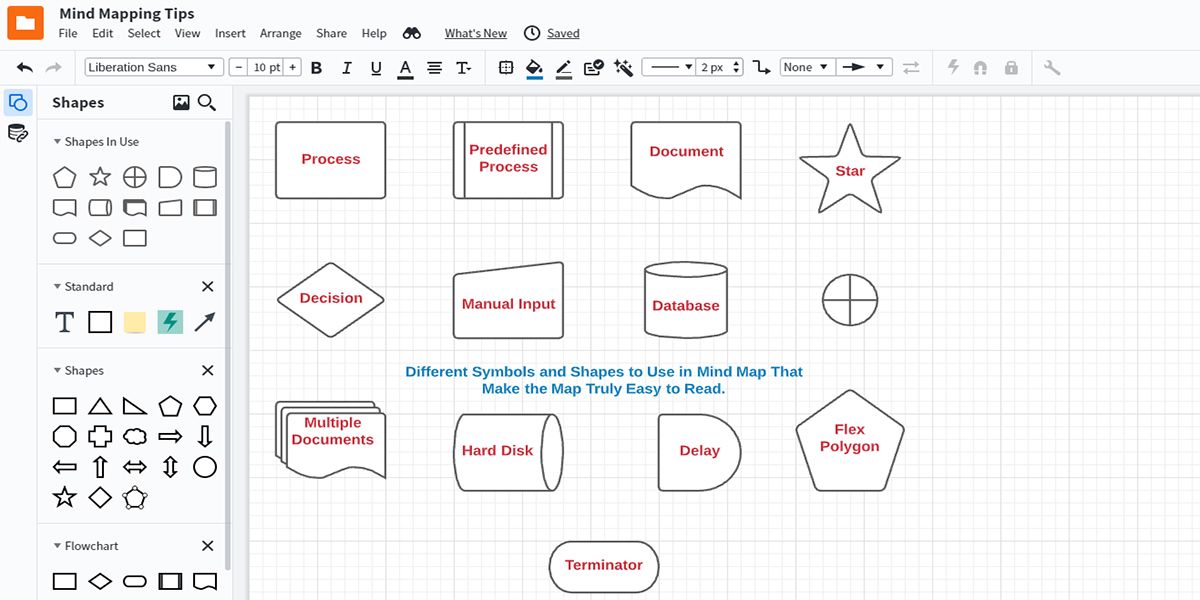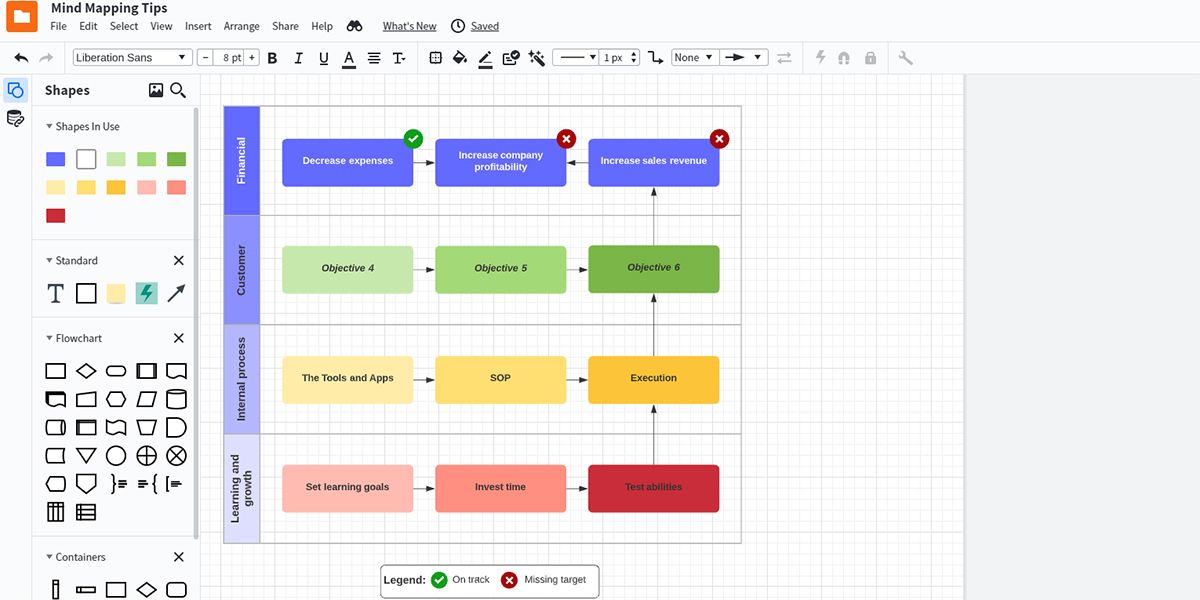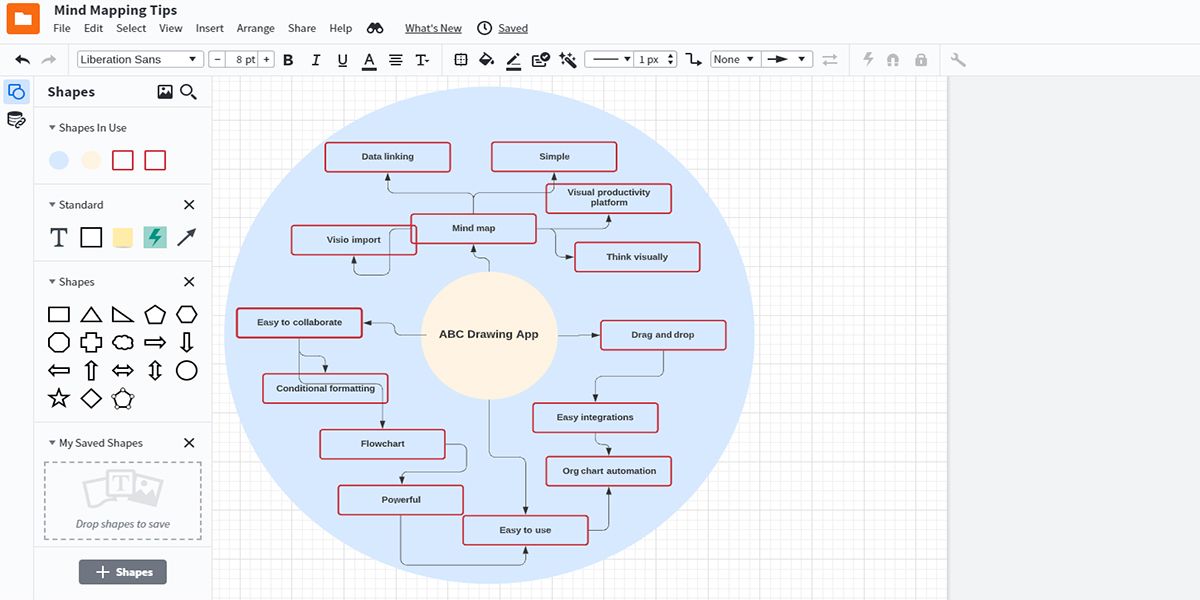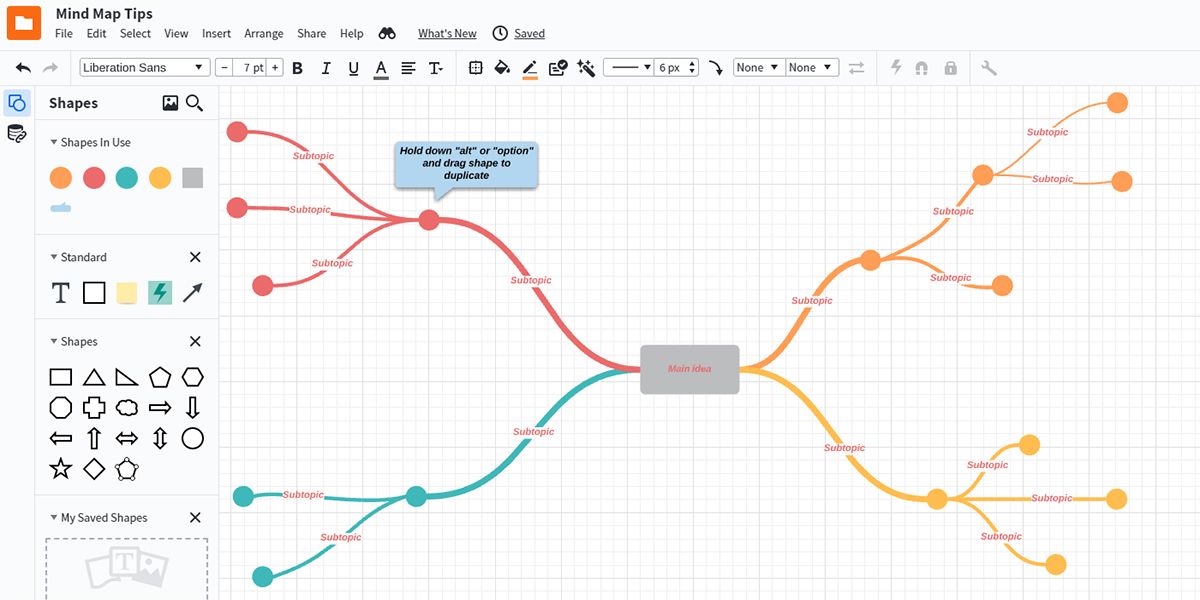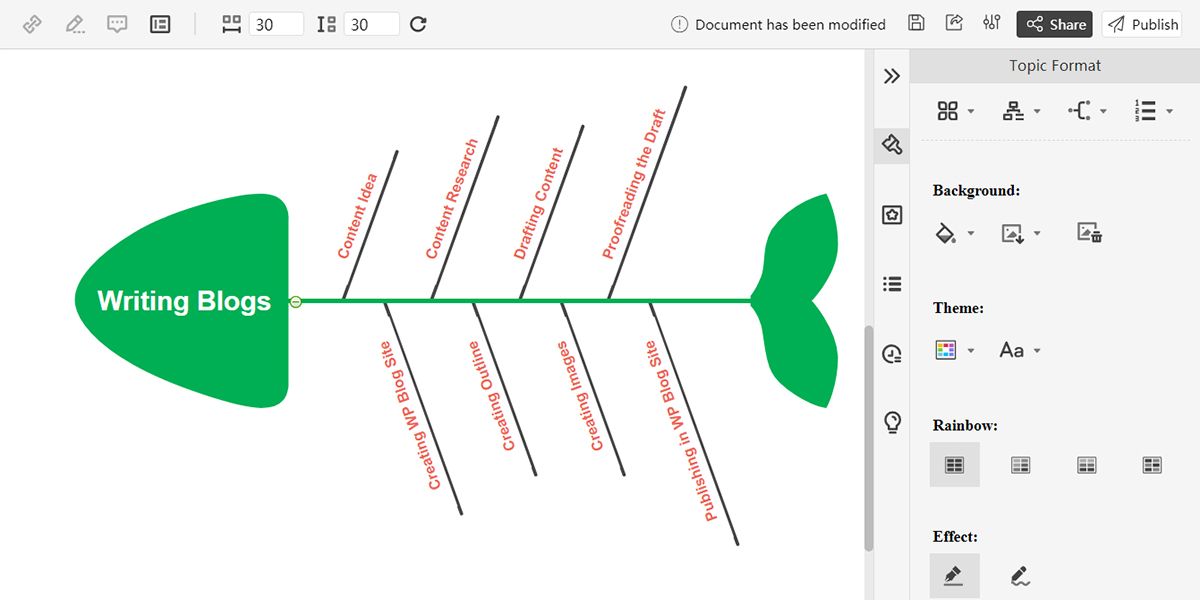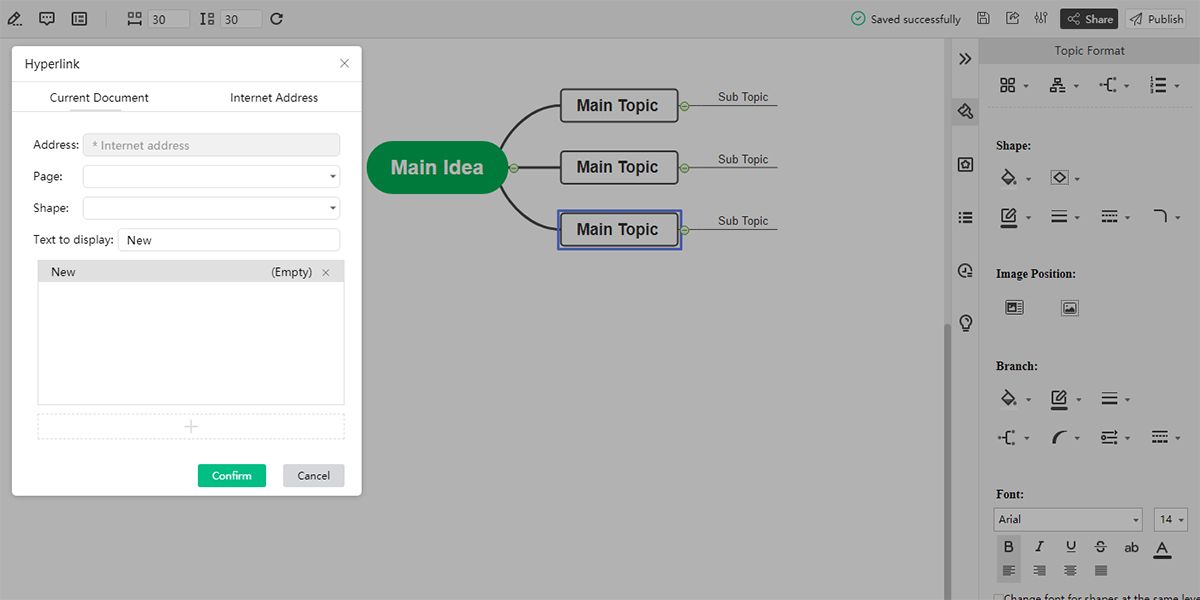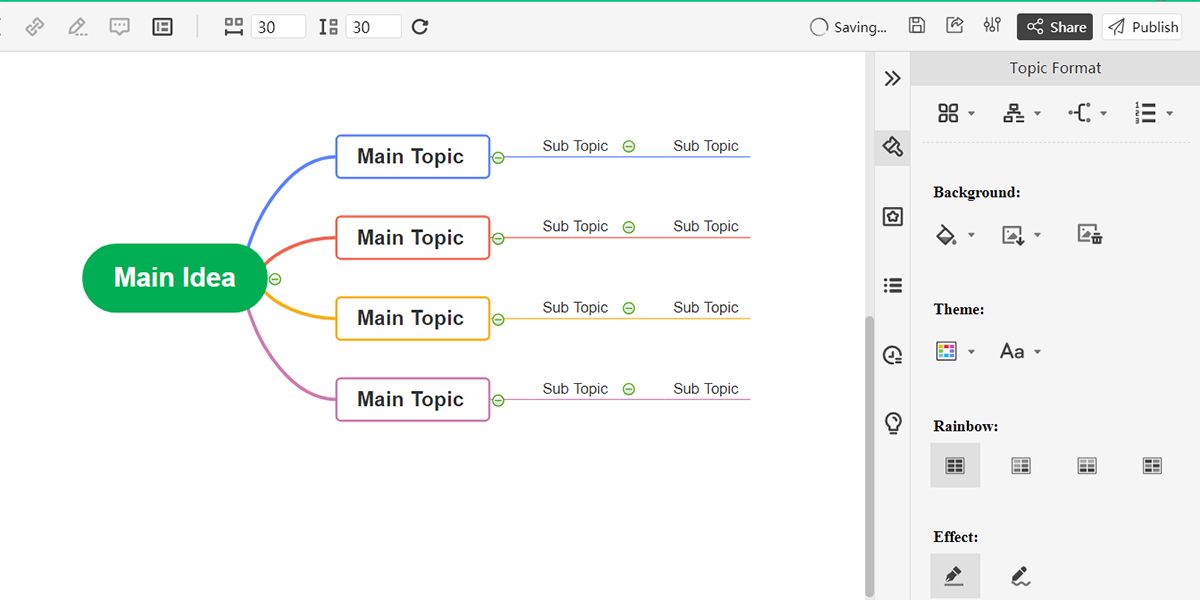Mind mapping has come a long way through evolution to become a mainstream technique for information organization, memorization, and brainstorming. Nowadays, you can create mind maps using online platforms for free.
While investing time and effort to visualize your ideas, make sure you follow the standard approach. Here are some tips for creating a successful mind map.
1. Select Appropriate Mind Map Structure
The first thing to do while creating a mind map is to choose the right kind of structure for your needs. Here are some common mind mapping layouts you can choose from during mind map development.
- Balanced Map: This is the most commonly used structure for creating a mind map layout. The branches of this map help you follow the logical sequence through visualization.
- Fishbone Chart: Using this structure, you can visualize the cause and effect. This diagram is commonly used for analyzing causes.
- Logic Chart: You can use this vertical layout to display formal logic.
- Org Chart: This layout is best for representing a hierarchical structure.
- Tree Chart: If you want to create a mind map to reach a decision, this structure will be the perfect one.
2. Maintain Similarity
The purpose of a mind map is to categorize the numerous thoughts you have. So, consider classification while making a mind map. Try to put the related elements together during visualization.
This concept will make the mind map easily understandable to your audience. You can always group similar ideas using similar styles and put them under the same parent nodes.
3. Use Variety of Elements
Any useful mind map should have a variety of elements to become fruitful for the users. No matter why you create a mind map, include different elements to increase its effectiveness.
To begin with, use various images and colors to increase the visual impact of your mind maps. Also, don't forget to include icons and symbols to improve its clarity.
You can always draw boundaries to segregate a similar set of ideas together or attract attention to a particular section. Always follow the basic ordering ideas to improve the structure. If you add a background image or color, it'll add a visual dimension to the map.
Try to use topic notes to decrease information overload and clutter on the map. Floating topics is another element that you can use for recording a series of ideas quickly in a mind map.
4. Choose Relevant Colors and Sizes
As you use any online platform to create mind maps, you can use visual effects. Such apps give you the freedom to use diverse colors, shapes, widths, sizes, fonts, and structures in your mind map.
In addition to being readable, a map becomes richer when it is colored, sized, and typed differently. Colors boost memory, so choosing colors carefully while making a mind map is important.
Select relevant colors for each topic and subtopics. Thus, you can easily recall the topics by easily associating them with colors. Moreover, you can use different sizes of bubbles or boxes according to their importance.
Since it’s a visual representation, the sizes will also leave a lasting impression on your mind. You can also use uppercase letters to signify crucial points or topics.
5. Establish Clarity
Creating a visually clean mind map can be a challenge, especially if you’re creating it for others to make them understand a complex theory. If the mind map branches are difficult to manage, use boundaries and a single color to separate the section from the rest.
Also, use simple phrases to describe your ideas. Avoid using obscure language to describe a theme or concept. However, when presenting your ideas with a mind map, use short, crisp, and meaningful words without going into details.
If you deem it necessary, attach Callouts to the mind map topics. These are the comments where you can vividly discuss the topics that might clutter the mind map if added as a subtopic.
6. Emphasize Readability
While creating a mind map for any purpose, focus on its readability. Including rich media in your mind map will make it easily understandable by anyone, including yourself.
A mind map contains the ideas in your mind. Hence, make sure the topics of your mind map make sense and are worth reading.
If you’re creating a decision tree, you need to have an overall view that’ll look complete. While developing a cause and effect chart, the causes should represent your logical thinking.
7. Mind Maps Should Be Distinctive
The mind map you’ll create should reflect your own ideas and an elaborate process of how you think. For this reason, it’ll be completely different from any other mind map.
Of course, you can refer to some common structure or get inspiration from sample mind maps. But make sure the mind map is original to make it stand out and be effective.
The core parts of your mind map should have original content. It would be great if you could write them in your own language. Thus, you can always understand the map quickly whenever you refer to it.
8. Use Flexible Attachments
Due to the complex nature of the present-day brainstorming and organizing processes, mind mapping is incomplete without attachments. Some modern online mind mapping applications like EdrawMind let you include various attachment files into the visual structure.
To make the mind maps easily intelligible, you need to have basic attachments like icons and images. You can also use a hyperlink to the relevant web pages that contain a detailed discussion of the referred topic.
While creating a mind map for the task management process, you can use progress and priority attachments for better visuals.
9. Diversify the Branches
Your mind maps will consist of various branches. In the case of highly detailed maps, there can be numerous branches and sub-branches.
To understand such situations without difficulty, you need to create diverse branches. Otherwise, you might get lost in the maze of mind mapping branches. Some tips for diversifying the branches are:
- Create thick branches growing outwards from the central image that represents the main topics.
- Color all the branches with different colors to easily distinguish them.
- Write headings on the branches that reflect the topics you map.
- Draw various branch endings to signify words and phrases.
Create Mind Maps Like a Pro With Best Tips
Whether you’re an academic, business professional, or an individual, you can always use the free online mind mapping tools to visualize your concepts.
You can make effective mind maps following the tips above that can organize, administer and reimagine your information in a structured manner. Using mind maps, you can visualize your ideas more easily.


